CHA Tabard
Hart House
St. Bart's
Queen's Beasts
Canadian Heraldic Dictionary


| Term | Source | Meaning | Illustration |
| Badger | Justice, D.H., Vol VI, P 146 | The Badger of this crest refers to the grantee’s work on the use of badgers as symbols in different cultures. |  |
| Badger Paw Prints | Gibson, R.J.S., Vol IV, P 230 |  The Badger (shown here by its paw-prints) refers to the grantee’s Cree heritage. They also refer directly to the badger sporran of the Calgary Highlanders Regiment, of which he was the Honorary Colonel. The Badger (shown here by its paw-prints) refers to the grantee’s Cree heritage. They also refer directly to the badger sporran of the Calgary Highlanders Regiment, of which he was the Honorary Colonel. |
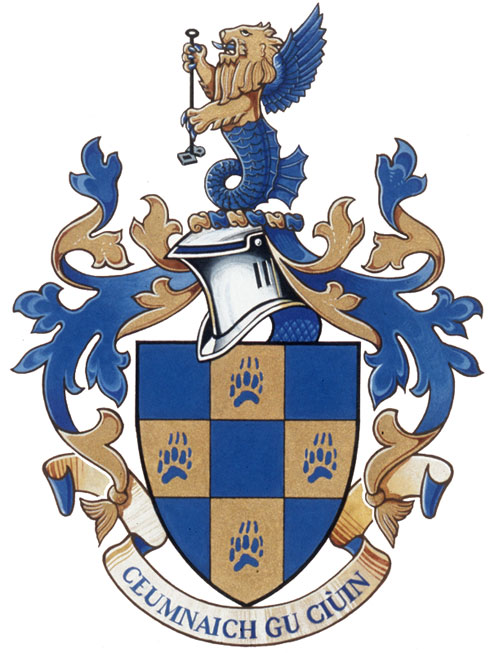 |
| Bahai Star | Millington, I., Vol IV, P 258 | The nine-pointed Baha’i Star is symbolic of the Baha’i faith to which the grantee belongs. |  |
| Bald Eagle | Brentwood College Association | The bald eagle is the North American version of the more traditional heraldic eagle, the king of birds – representing supremacy and leadership. It also has significance as a First Nations symbol. |  |
| Banyan Tree | Lafond, J-D, Vol V, P 264 |  The Banyan Tree in these arms is a symbol of work, energy and hope. The supporters in the arms are elaborated under the letter "F". The Banyan Tree in these arms is a symbol of work, energy and hope. The supporters in the arms are elaborated under the letter "F". |
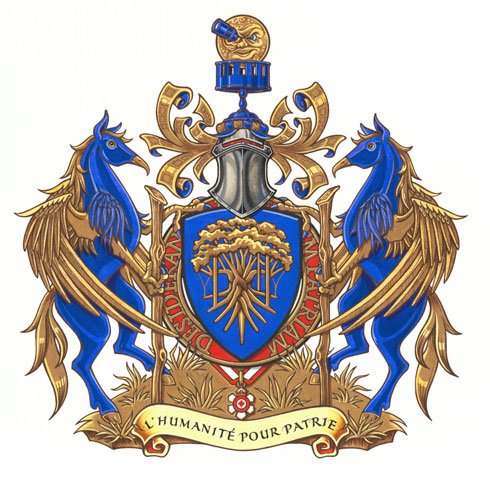 |
| Barque | Leblanc Association |  The single-masted vessel shown in base is blazoned as a barque, possibly to distinguish it from a lymphad, which it resembles slightly. It is certainly not a barque in any nautical sense, since the latter has three masts. It is presumably meant to describe any sailing vessel of indeterminate type. The single-masted vessel shown in base is blazoned as a barque, possibly to distinguish it from a lymphad, which it resembles slightly. It is certainly not a barque in any nautical sense, since the latter has three masts. It is presumably meant to describe any sailing vessel of indeterminate type. |
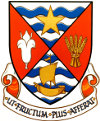 |
| Bastion | Rural Municipality of St. Andrews, Man., Vol V, P 174 | The Bastion is a form of fortification used in many parts of Canada. |  |
| Beadwork, Metis | Redmile, R.D. (Badge) Vol VI, P 74 |  The glove is a traditional part of a bishop’s vesture, since the grantee is a bishop. The Metis Beadwork that decorates them is a reference to his maternal ancestors. The glove is a traditional part of a bishop’s vesture, since the grantee is a bishop. The Metis Beadwork that decorates them is a reference to his maternal ancestors. |
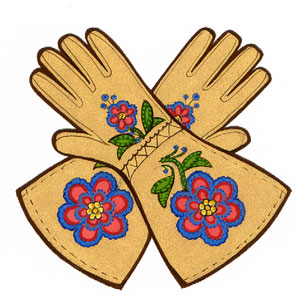 |
| Bear, Black | Good, Jonathan | The black bear, as distinct from “a bear Sable”, represents a distinct North American species. When blazoned as Proper, it should show the brown muzzle of the natural animal. |  |
| Bear Paw Prints | Baker, a. Vol VI, P 354 |  The Paw Prints of the Bear were well known to early settlers in Canada. The Paw Prints of the Bear were well known to early settlers in Canada. |
 |
| Bear, Polar | Association of Universities & Colleges | Again, this is a distinct species, not just a bear Argent. |  |
| Beaver (First Nations Style) | Regional Cadet Support Unit (Pacific) (Badge) Vol V, P 420 |  The beaver (its face depicted in West Coast First Nations style) is known by them for its industriousness, building skills and wise advice. The beaver (its face depicted in West Coast First Nations style) is known by them for its industriousness, building skills and wise advice. |
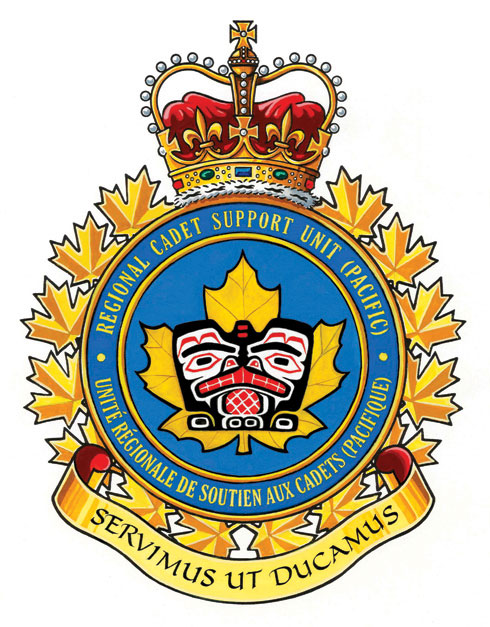 |
| Beaver Lodge | General Synod, Anglican Church of Canada . Vol VI, F-N P3 |  The Beaver Lodge is the home of the animal symbol of our country and is also an important emblem of the Algonquian people. The Beaver Lodge is the home of the animal symbol of our country and is also an important emblem of the Algonquian people. |
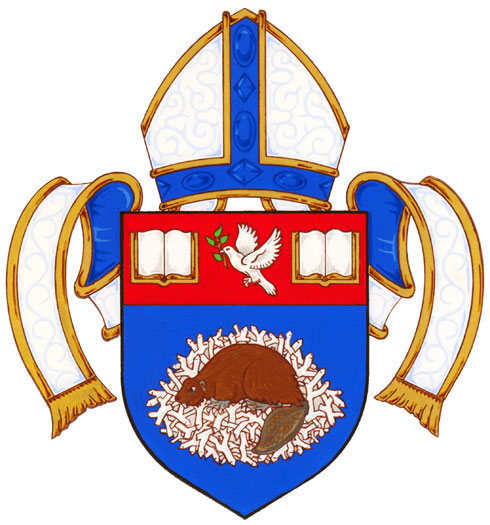 |
| Beaver Pelt | Skutezky, E.M.R. Vol IV, P 500 | The Beaver Pelt, shown here on a stretching frame, alludes to the fur traders of early Canada. | 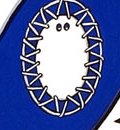 |
| Beaver Playing an Accordian | Masse, P. Vol V, P 502 |  The beaver is the classic Canadian animal emblem. The accordion refers to the grantee’s enthusiasm for the instrument. The beaver is the classic Canadian animal emblem. The accordion refers to the grantee’s enthusiasm for the instrument. |
 |
| Beehive Oven | Petozzi (Child’s arms) Vol VI, P 115 |  The Beehive Oven (shown at the centre chief) alludes to a passion for baking The Beehive Oven (shown at the centre chief) alludes to a passion for baking |
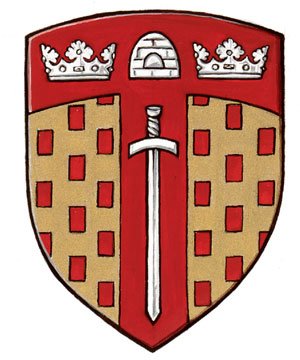 |
| Bendlet Reversed | Séguin, HMCS Cornerbrook & 5th Maritime Operations Group (shown here). |  The four Azure bendlets in the badge are blazoned as "reversed". Sometimes bend reversed is used in place of the more traditional term bend sinister. The four Azure bendlets in the badge are blazoned as "reversed". Sometimes bend reversed is used in place of the more traditional term bend sinister. |
 |
| Bighorn Sheep | Conservation Officer Service |  The great sheep of the lower slopes of the Rockies and Selkirks. The great sheep of the lower slopes of the Rockies and Selkirks. |
 |
| Birch-bark | Thunder Bay Historical Museum Society, Vol V, P 68 |  The use of birch-bark in the pale of these arms represents the Ojibway culture. It also alludes to the birch-bark canoes used in the fur trade era of Canadian history. The use of birch-bark in the pale of these arms represents the Ojibway culture. It also alludes to the birch-bark canoes used in the fur trade era of Canadian history. |
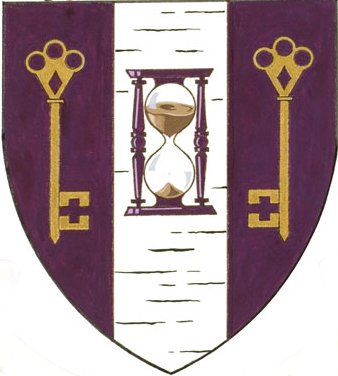 |
| Bison-Lion | Bryant, J.B., Vol VI, P 257 | The Winged Bison-Lion has a number of significances. The first is found in the arms of Manitoba, where the grantee was born. The leonine hindquarters refer to a ring of eight lions found in her shield. The wings refer to her service in the RCAF. | 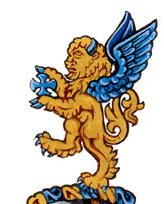 |
| Bison | MacDonald, Rural Municipality (Supporter) | Another example of a bison, this time as a supporter. |  |
| Bivouac | Carrière | Three muskets or rifles piled to support one another are said to be in "bivouac". The illustration unfortunately does not depict the way in which muskets or rifles are stacked in reality. |  |
| Black Rod of Senate | Christopher, T., Vol V, P 42 |  The Black Rod held by the eagle in this crest refers to the grantee’s service as the Usher of the Black Rod in the Canadian senate. The Black Rod held by the eagle in this crest refers to the grantee’s service as the Usher of the Black Rod in the Canadian senate. |
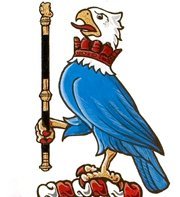 |
| Black Walnut Tree | Brown, A. S., Vol V, P 234 |  The Black Walnut Tree, as shown in the crest, is a native tree of Ontario. The Black Walnut Tree, as shown in the crest, is a native tree of Ontario. |
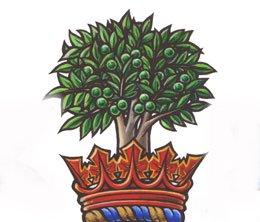 |
| Blockhouse | 3 Area Support Group, Oromocto, NB, (Badge) Vol V, P 322 |  The blockhouse is a distinctive historical military structure found within many provinces, especially in Atlantic Canada. The blockhouse is a distinctive historical military structure found within many provinces, especially in Atlantic Canada. |
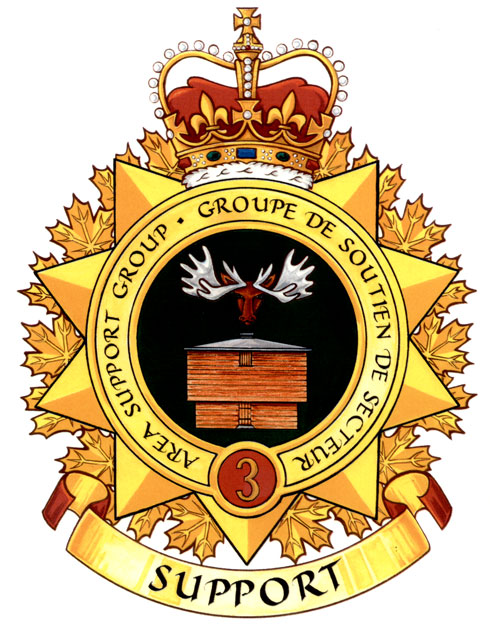 |
| Blueberry | 3 Air Maintenance Squadron. Vol III, P 386 |  The Blueberry, plentiful almost everywhere in Canada, was an important fruit widely used by early settlers. The Blueberry, plentiful almost everywhere in Canada, was an important fruit widely used by early settlers. |
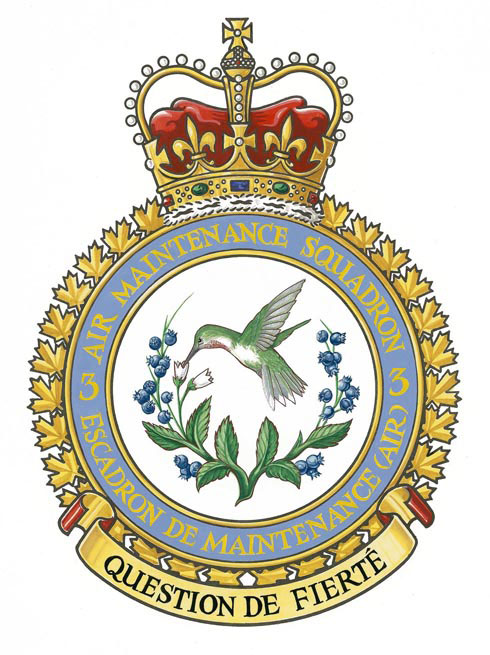 |
| Blue Flag Flower | Official Flowers of Canada. | The Blue Flag is the Provincial flower of Quebec. | 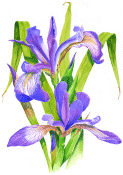 |
| Bluebunch Wheatgrass | Guichon, J.I. Vol VI. P 361 |  Bluebunch Wheatgrass is a grass of Western North America. It is used primarily as a grazing food for livestock. Bluebunch Wheatgrass is a grass of Western North America. It is used primarily as a grazing food for livestock. |
 |
| Blue Jay | Province of PEI, Vol IV, p 195 | The common, delightfully noisy and friendly jay of the Eastern US and Canada. It is the official Provincial bird of PEI. | 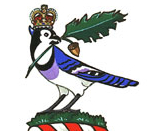 |
| Bookwheel | John, C.R., (Crest) Vol VI, P 435 |  The Bookwheel (sometimes called a reading wheel) was a 16th-century invention for consulting several books at once. It alludes to a family’s love of books. The Bookwheel (sometimes called a reading wheel) was a 16th-century invention for consulting several books at once. It alludes to a family’s love of books. |
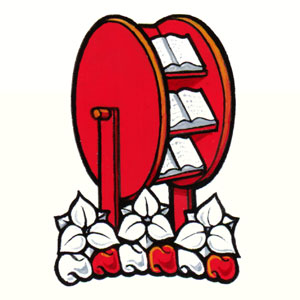 |
| Bovine Skull | Air Cadet Summer Training Centre – Penhold, Alta., (Badge) Vol 4, P 166 |  The Bovine Skull alludes to the Cattle ranching of Alberta, and refers specifically to the badge of Canadian Forces Base Penhold. The Bovine Skull alludes to the Cattle ranching of Alberta, and refers specifically to the badge of Canadian Forces Base Penhold. |
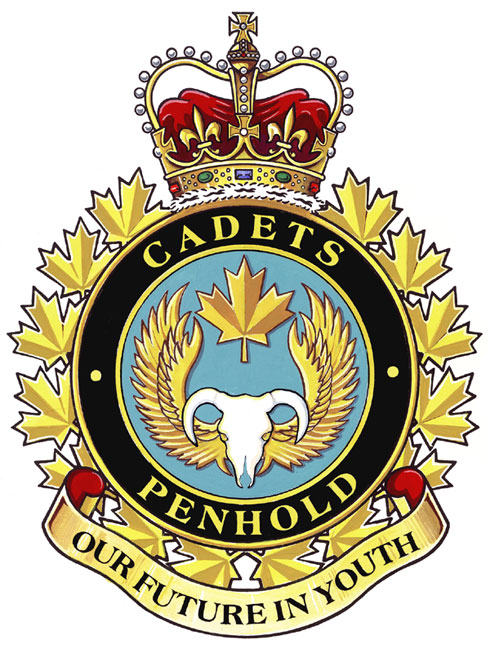 |
| Bow (fabric) | National Council of Women of Canada. Vol II, P233 |  These arms are blazoned as Argent a maple leaf Gules charged with a ribbon knotted to form a bow Or all within an orle of twelve like bows Azure. These arms are blazoned as Argent a maple leaf Gules charged with a ribbon knotted to form a bow Or all within an orle of twelve like bows Azure. The knotting of the ribbons alludes to the idea of solidarity within the group or council. The bows themselves suggest the work done by women. |
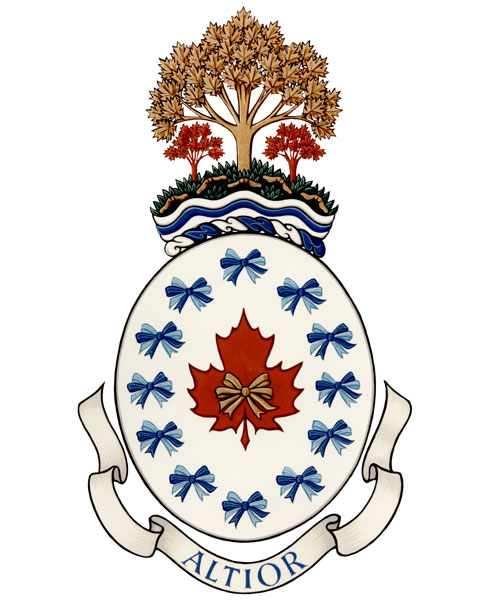 |
| Branding Iron | Gibson | An instrument for marking cattle, horses, etc, for identification, as held by the sea-lion illustrated. |  |
| Bufflehead Duck | Town of Sidney, BC, Vol III, P 135 |  The Bufflehead Duck, shown here as a supporter, is a small North American duck. The name bufflehead is a combination of “buffalo” and “head”, referring to the odd shape of the bird’s head. The Bufflehead Duck, shown here as a supporter, is a small North American duck. The name bufflehead is a combination of “buffalo” and “head”, referring to the odd shape of the bird’s head. |
 |
| Bulrushes | Township of South Frontenac, Vol VI, P 220 |  The Bulrushes (seen here in cross) refer to the many lakes of the township, and allude to the natural setting and recreation aspects of the area. The Bulrushes (seen here in cross) refer to the many lakes of the township, and allude to the natural setting and recreation aspects of the area. |
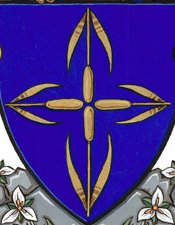 |






